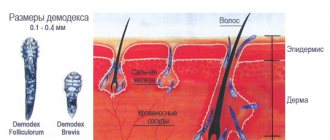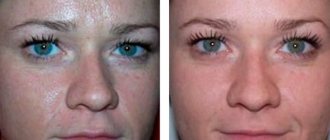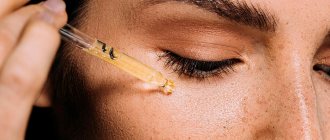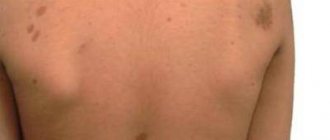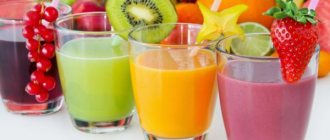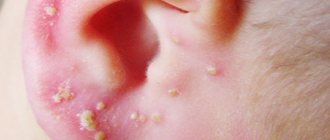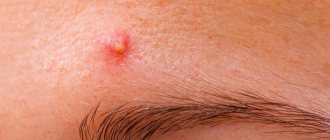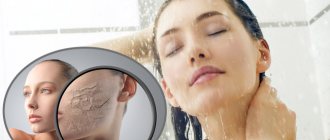Pale face: internal reasons
All the reasons why the skin becomes pale can be divided into external and internal.
Internal causes that, if identified, require drug treatment:
- Anemia. This is perhaps the most common reason. Lack of iron leads to pale skin, which sometimes takes on a grayish color. At the same time, pronounced bruises appear under the eyes. The person complains of irritability and severe fatigue. A decrease in blood pressure due to anemia leads to a constant feeling of cold in the feet and hands. By the way, anemia can be caused by an external reason - diets;
- Heart failure. The disease is characterized by decreased blood circulation in the area of the heart muscle. As a result, oxygen saturation of tissues deteriorates, which is manifested by pale skin. The main symptoms also include a feeling of tightness in the chest, pain radiating to the neck, left arm, back, bruising and swelling under the eyes. Angina attacks occur especially often after physical activity. But if the skin turns pale against the background of these symptoms without active movements, perhaps this is a warning about myocardial infarction;
- Vegetovascular dystonia. Pale skin, high fatigue, dizziness, changes in pressure and temperature, increased sweating, cold feet and hands are the main signs of VSD, which is often diagnosed even in a teenage child. Most often, signs appear when the weather changes;
- Hypothyroidism. Pale skin with a yellowish color is a symptom of a deficiency of hormones produced by the thyroid gland. With their deficiency, the absorption of iron in the intestine decreases, which provokes specific anemia;
- Tuberculosis. A pale face, blue discoloration in the eye area, cough, often with blood, sudden weight loss, as well as sweating and fever in the evenings are symptoms by which the disease can be identified;
- Leukemia. Unfortunately, oncology does not spare either a child or an adult. Pale skin that changes color to blue at any touch, lethargy, and drowsiness are characteristic signs that accompany blood cancer.
If you are concerned about pale skin and at the same time feel unwell, do not delay visiting a medical facility. There are times when it's better to play it safe. Surely, having found out that pale skin color has nothing to do with the listed pathologies, you will breathe more freely and, perhaps, your face will gain a long-awaited blush.
How does yellow skin appear?
The yellow color of the skin is associated with the production of bilirubin , a pigment that is part of the blood. Bilirubin is a breakdown product of hemoglobin , contained in red blood cells and performing a transport function in the body (moving carbon dioxide and oxygen). Bilirubin is excreted from the human body in stool. If, due to certain reasons, a lot of it accumulates in the human body, then the consequence may be yellow spots on the skin.
Due to the increase in bilirubin content in the body, the skin first turns yellow. A person may have yellow skin on the legs, yellow skin under the eyes, yellow skin around the nails, etc. The whites of the eyes, palms, and the lower surface of the tongue may also turn yellow. In this case, a person’s urine darkens, it takes on the color of beer.
If the skin on the body or hands is yellow, this may be due to a high level of carotene in the blood. Most often, yellow skin around the mouth or yellow skin around the eyes is observed in people who adhere to the orange diet or diet for a long time, or use certain medications.
If yellowing of the skin is still associated with impaired excretion of bilirubin from the body, then in this case three types of jaundice are determined.
Hemolytic jaundice is diagnosed when hemoglobin breaks down too quickly. In this case, a very large amount of bilirubin is formed, and the liver cannot effectively process indirect bilirubin into direct bilirubin. As a result, the level of indirect bilirubin increases.
The development of hepatic jaundice is associated with liver damage due to viral hepatitis , liver cirrhosis , exposure to alcohol, etc. In this case, the amount of direct bilirubin in the blood increases.
Cholestatic jaundice develops due to disturbances in the movement of bile, as the bile ducts in the human body become clogged. There is an increase in the amount of direct bilirubin in the blood.
External reasons
Fortunately, the skin does not always become pale due to illness.
In most cases, the defect can be easily eliminated:
- Fright. In both a child and an adult, a sharp release of adrenaline into the blood leads to vasoconstriction. In this case, the face acquires a pronounced white color. As soon as the fear passes, the concentration of the hormone returns to normal and the natural blush returns to the face;
- Living in a metropolis and industrial areas is another factor that explains the pale complexion. Air saturated with gases provokes mild hypoxia. And lack of oxygen and constant stress have a negative impact on appearance;
- Low physical activity. Alas, the rapid speed of life, lack of time to maintain excellent physical condition, reluctance to sweat in the gym is the reason why the skin loses its natural pleasant color;
- Changes in complexion are a characteristic symptom of a person who spends too much time looking at the monitor. In addition to the radiation that negatively affects the entire body, there is also the lack of proper rest, which also does not add blush;
- Pregnancy and the menstrual cycle are periods associated with hormonal changes, which in turn affect complexion;
- Poor nutrition. Lack of vitamins and minerals, enthusiasm for diets often lead to an emaciated appearance, especially in the spring, when there is no opportunity to pamper yourself with cheap fruits and vegetables;
- Smoking and alcoholism. Pale skin is one of the unpleasant, but not so significant signs of addictions. As soon as a person has a desire to return to a healthy lifestyle and quits his bad habits, the skin acquires a normal color.
By the way, there are people whose pale skin color is explained by natural causes. It’s just that their dermis contains much less melanin. Therefore, a white tint of the skin is the norm for them.
Among the irreversible causes are age-related changes. With age, any person's skin gradually begins to lose moisture. At the same time, collagen production decreases and the face becomes much more susceptible to external factors. That is why there is pallor and increased dryness of the previously ruddy face.
Causes and symptoms of yellowing skin
If you notice that your skin is turning yellow, pay attention to other symptoms. Below are the possible causes (diseases) that cause the skin to turn yellow. In any of these cases, it is worth seeking medical help and conducting examinations.
Jaundice in adulthood often indicates:
- alcohol abuse;
- liver infections;
- liver cancer;
- cirrhosis (liver fibrosis, often due to alcohol);
- gallstones (cholesterol stones from hardened fatty material or pigment stones from bilirubin);
- hepatitis (disease and swelling of the liver, which reduces its ability to function);
- pancreatic cancer;
- parasites in the liver;
- hemolytic anemia (rupture or destruction of red blood cells, which causes a reduction in the number of red cells in the circulation, leading to severe fatigue and weakness);
- an adverse reaction or overdose of a drug such as acetaminophen (Tylenol).
Yellow skin is also common in babies who are born prematurely. Excess bilirubin can occur in newborns because their liver is not yet fully developed. Bilirubin is a yellow pigment formed by the breakdown of old cells. Jaundice begins when the liver does not metabolize bilirubin as well as it needs to. The organ may be damaged and in this case is not able to carry out the natural process. There are cases when bilirubin is not able to enter the digestive system, from which it is freely excreted along with the stool. In other cases, there is too much bilirubin trying to leave the liver at once, or too many red cells being destroyed at once.
Chronic hepatitis C
Hepatitis C is a consequence of liver damage from the hepatitis C virus (HCV), which is transmitted into the human blood. It is spread through contact with contaminated blood, such as contaminated needles, toothbrushes and razors, unprotected sex with an infected person, and from mother to child during childbirth. You should schedule a visit with your doctor to discuss possible treatment options. Symptoms: weakness; nausea; muscle pain; loss of appetite; joint pain. Symptoms that never occur with chronic hepatitis C: pain in the right hypochondrium; pain in the left hypochondrium; pain around the navel.
Infectious mononucleosis
Mononucleosis is a clinical syndrome characterized by fever, sore throat and swollen lymph nodes. The diagnosis is confirmed by searching for antibodies against viruses that cause mononucleosis. In infectious mononucleosis, the liver and spleen are affected, and moderate jaundice is possible.
Sickle cell anemia
Severe pain is a hallmark of sickle cell disease. They are caused by a blocked blood vessel. Patients may develop jaundice.
Gallstones
Gallstones are hard deposits that form in the gallbladder. Symptoms: nausea, loss of appetite, pain in the right hypochondrium, jaundice.
Hemostatic spherocytosis
Hereditary spherocytosis is a condition in which red blood cells change. People with this condition usually have a lack of red blood cells (anemia), yellowing of the eyes and skin (jaundice), and an enlarged spleen (splenomegaly). Symptoms: fatigue; pain (stomach pain); fever; general abdominal pain; yellow skin.
Inflammation of the gallbladder (cholecystitis)
Cholecystitis is inflammation of the gallbladder. The organ contains bile (digestive juice). Gallstones can form when it becomes thick (the stones block the gallbladder and cause inflammation). Ignoring medical attention often results in the bladder rupturing and causing a fatal infection in the abdomen. Symptoms: pain (abdominal pain); nausea; loss of appetite; diarrhea; constipation.
Liver neoplasm
It is a serious liver disease. The organ is necessary for metabolic processes and is responsible for filtering and purifying the blood. If you notice yellowing of your skin, you should not put off going to the doctor. Possible symptoms: fatigue; loss of appetite; nausea or vomiting; abdominal pain; unintentional weight loss.
How to get rid of pallor
- If your face or entire body is too pale, you can recommend cosmetics - blush, powder, self-tanning.
However, all these tricks will not help you maintain your blush all the time. It is necessary to solve the problem, not mask its consequences.
- If there are no diseases that require treatment, you can correct the situation, so to speak, at home.
- All you need to do for this is to adjust your diet, devote more time to rest, avoid stressful situations, get rid of bad habits, and do not forget about physical activity.
In this case, you will never again have to justify your paleness with an aristocratic origin!
When to see a doctor
When yellowing of the skin appears, first of all you need to listen to the general condition of the body. If no symptoms are observed, perhaps the cause lies in poor diet and digestive problems. If skin pigmentation does not subside within several days, a person should consult a therapist.
The doctor will conduct an initial diagnosis, during which a further treatment plan will be prescribed.
When to see a doctor
Depending on the disease, the patient will need the help of doctors of a more narrow specialization:
- gastroenterologist;
- infectious disease specialist;
- hematologist;
- endocrinologist.
Methods of treating diseases with yellow skin color
Before prescribing treatment, it is necessary to determine the cause of the pathology. To do this, consultations are carried out with specialists who, during the course of research, prescribe a rehabilitation plan. Often, in addition to taking medications, a diet is necessary that is aimed at normalizing the functioning of internal organs.
Medications
For pathologies caused by viruses, the following drugs are used:
- Ribavirin. Available in the form of tablets and capsules. Do not use during lactation, pregnancy, during recovery after myocardial infarction, or for problems with the thyroid gland. Side effects include: headache, nervousness, high blood pressure. Take 1 tablet 2 times a day. The duration of treatment is at least 4 months. Price from 94 rub.
- Sofosbuvir. It is used to treat hepatitis C in combination with other drugs. Available in tablet form. Take 1 tablet per day with meals. Duration of treatment is 3 months. The drug is often easily tolerated and has no side effects. It is prohibited for use by pregnant women, as well as during lactation and in the presence of individual intolerance to the components. Price from 4000 rub.
Ribavirin
To improve digestion processes the following are prescribed:
- Mezim Forte. Available in tablet form. Used to eliminate eating disorders and improve metabolism. Contraindications include: pork allergy, intestinal obstruction and pancreatitis. Side effects: diarrhea, abdominal pain, nausea. Take 2 tablets 1 time per day with meals. The duration of treatment is prescribed individually by the doctor. Price from 150 rub;
- Creon. Available in capsule form. Refers to drugs that improve digestion. Contraindications include only individual intolerance to the components of the drug. Take 1 capsule 2 times a day after meals. The duration of treatment is prescribed depending on the stage and type of disease. Price from 250 rub.
- Pancreatin. Prescribed to eliminate pancreatic dysfunction and improve digestion. Take 2 tablets 3 times a day. Duration of treatment is at least 14 days. Side effects include allergic reactions. Contraindications: acute forms of pancreatitis. Price from 45 rub.
Traditional methods
Traditional medicine helps maintain skin tone and health:
- Curd mask. Ingredients: 3 tbsp. l. cottage cheese and 2 tbsp. l. sour cream. The components must be mixed and applied to the face. Keep the mask on for about 25 minutes and then rinse with warm water. For those with oily skin, sour cream can be replaced with kefir. Several procedures are necessary per week.
- Cucumber mask. Ingredients: chopped cucumber - 3 tbsp. l., olive oil-2 tbsp. l., pulp of 1 lemon. All ingredients must be thoroughly mixed and applied to the face. The mask is left for 20 minutes, then washed off with warm water. You can also cut the cucumber into slices and place it on your face, or wipe your skin with freshly squeezed cucumber juice. The procedure can be repeated 3-4 times a week.
- Berry mask. The following berries are suitable for making a mask: strawberries, raspberries, currants and viburnum. The mask is made from squeezed berry juice. Thanks to such procedures, complexion improves and dead cells are removed. Keep the mask on your face for about 10-15 minutes, then wash off with warm water and apply moisturizer. Repeat 2-3 times a week.
Other methods
Yellow skin color in an adult can indicate problems with internal organs, so proper nutrition plays a significant role. When compiling a diet, it is necessary to take into account the intake of vegetables and fruits, as well as their compatibility with each other.
Often, improperly selected food provokes constipation and diarrhea, which negatively affect the condition of the skin. Increased stress on the digestive tract causes pain and discomfort. One of the reasons for improper digestion is fatty, smoked and spicy foods.
Cheese, cottage cheese
Experts recommend consuming the following products:
- lean meats (rabbit, chicken, veal);
- eggs;
- cheese, cottage cheese;
- seafood;
- cereals;
- nuts;
- vegetable oil.
The following should be excluded from the diet:
- canned fish and meat;
- fried food;
- chocolate;
- cocoa and coffee;
- seasonings, spices;
- alcohol.
In addition to proper nutrition, it is important to maintain a drinking regime. You need to drink about 2 liters of water per day. You should choose only purified or spring water. Thus, the body removes toxins and harmful substances in a timely manner, and the skin has a healthy color.
Physical activity and walks in the fresh air have a beneficial effect on the condition of the skin. Regardless of weather conditions, experts recommend going outside every day for at least 15-20 minutes. Such a pastime relieves fatigue, fills the body with strength, and returns the face to a ruddy and fresh appearance.

